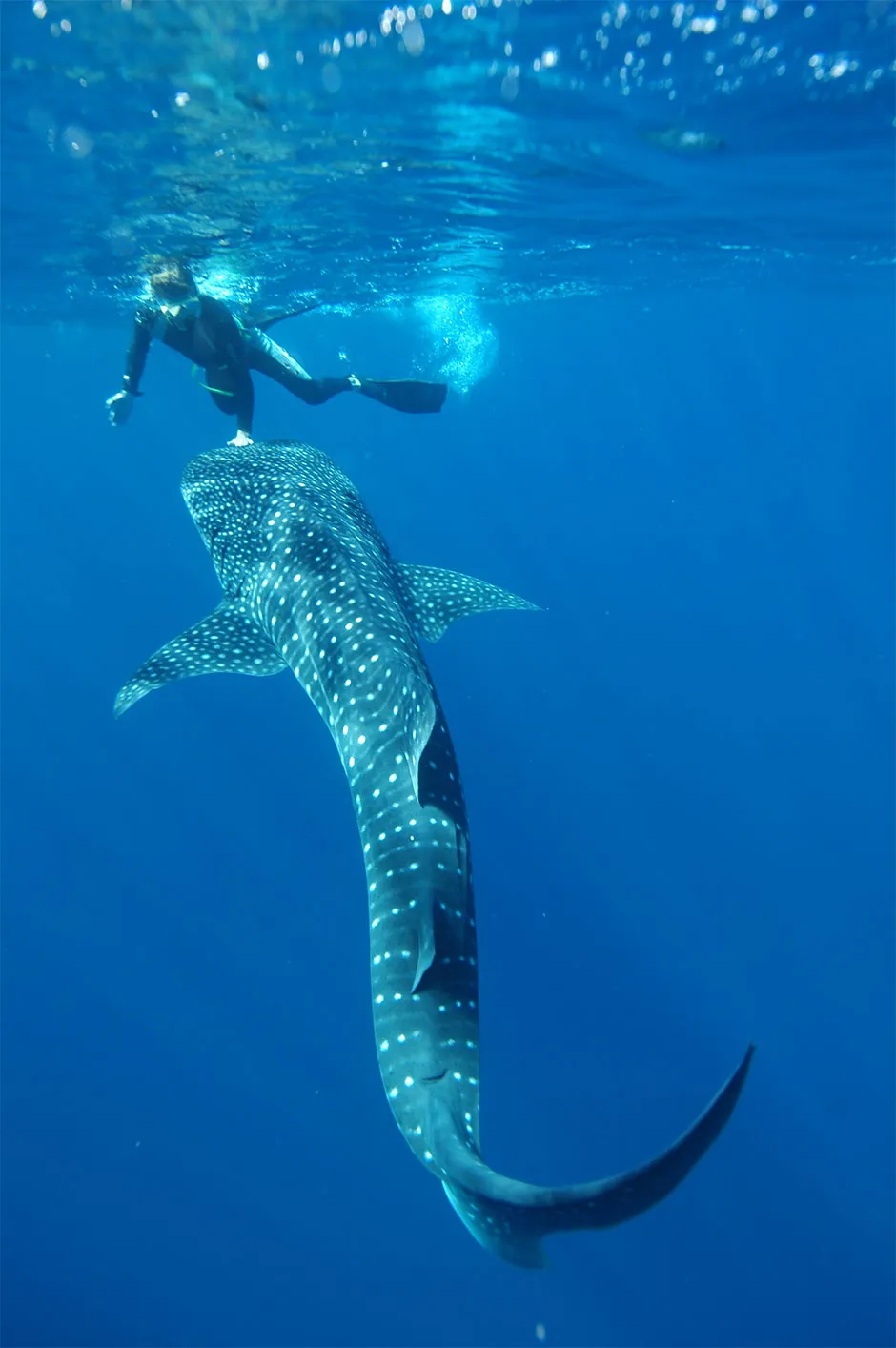- Scientists have calculated the age of two long-dead whale sharks, which they believe can live for up to 100 years.
- Whale sharks don't have the bony structures that are usually used to age fishes, so the researchers instead used the relics of Cold War-era nuclear fallout.
- This fallout helped the researchers to calculate how often the sharks' 'growth rings' were formed.
Scientists have for the first time calculated the true age of whale sharks, with the help of a radiocarbon that was formed in the atmosphere during the atomic bomb tests in the 1950s.
The findings, published in the journal Frontiers in Marine Science, appear to back theories that these species, which are classified as endangered, have long life spans.
Read more about sharks:
- Light shed on secrets of glow-in-the-dark sharks
- Why have hammerhead sharks evolved their distinctive heads?
Dr Mark Meekan, from the Australian Institute of Marine Science in Perth, Western Australia, and one of the study authors, said: “Earlier modelling studies have suggested that the largest whale sharks may live as long as 100 years.
“However, although our understanding of the movements, behaviour, connectivity and distribution of whale sharks have improved dramatically over the last 10 years, basic life history traits such as age, longevity and mortality remain largely unknown.
“Our study shows that adult sharks can indeed attain great age and that long lifespans are probably a feature of the species. Now we have another piece of the jigsaw added.”

Biologists have found it hard to determine the age of whale sharks because they lack bony structures called otoliths that are traditionally used to obtain information about the age of fishes. Instead, the world’s largest fish have vertebrae that feature distinct bands, or rings, which are thought to increase in number with age, much like those seen in tree trunks.
But whether these rings formed every year or every six months has been unclear. To find out more, an international team of researchers turned to the radioactive legacy of the nuclear arms race during the Cold War.
Read more about lifespans:
Between 1955 and 1963, the use of atomic bombs doubled the amount of an isotope called carbon-14 in the atmosphere, which was absorbed by every living being on the planet.Carbon-14 is a naturally occurring radioactive element used by archaeologists and historians to date ancient bones and artefacts.

The researchers measured the carbon-14 levels in the growth rings of two long-dead whale sharks stored in Pakistan and Taiwan, which helped them figure out how often the rings were created.Analysis showed one of the specimens to be 50 years old at the time of death.
Dr Meekan added: “We found that one growth ring was definitely deposited every year.
“This is very important, because if you over or under-estimate growth rates you will inevitably end up with a management strategy that doesn’t work, and you’ll see the population crash.”
Reader Q&A: How do we know how old relics are?
Asked by: Lisa Jago, Reading
Radiocarbon dating is based on the fact that different isotopes (forms) of the element carbon, which is found in all 'organic' materials, can be stable or unstable.
When an organism dies, it stops taking up carbon; levels of isotopes C12 and C13 remain constant, but C14 decays, with a half-life of around 5500 years. Thus, if you know the ratio of C14 to C12 and C13 in a sample, you can work out how many times the C14 has halved.
If there's a quarter of the original C14, for instance, then two half-lives have passed since the organism died, so it is around 11,000 years old.
Read more: